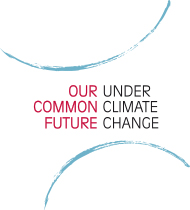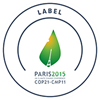Organizers : INRA, Paris, France, CIRAD, Montpellier, France, IRD, Eco&sols; research unit, Montpellier, France
Date : July 7th, from 4pm to 7pm
Location :� INRA, 147, rue de l'Universit�, Paris, France
Expected number of participants : 1-50
Nature of participants : Research scientists, representatives of international agencies and of ministeries
Keywords : Carbon sequestration, Soil, Ecosystem services, Food security
Keynote speakers :
-
R. Lal Ohio state university, School of natural resources, Columbus - ohio, United States of America
-
L. Montanarella EC-JRC, Soil bureau, Ispra, Italy
-
P. Smith Aberdeen University, Soils and global cahnge, Aberdeen, United Kingdom
-
C. Chenu AgroParisTech, Ecosys research unit, Paris Grignon, France
-
R. Valentini University of Tuscia, Agrofood and forest, Viterbo, Italy
-
P. Ciais LSCE, Gif sur Yvette, France
-
J. Mousset ADEME, Agriculture, Angers, France
-
H. Haberl Vienna University, Social ecology, Vienna, Austria
-
M. Bernoux IRD, Eco&sols;, Montpellier, France
-
M. Le Henaff Minist�re de l'Agriculture, de l'Agro-alimentaire et de la For�t, Paris, France
-
C. Kao Minist�re de l'Agriculture, de l'Agro-alimentaire et de la For�t, Paris, France
-
D. Arrouays INRA, Infosol, Orleans, France
-
J. Jeagermeyr PIK, Earth system science, Postdam, Germany
-
Z. Bai WUR, Isric, Wageningen, Netherlands
-
P. Gerber World Bank, New-York, United States of America
-
L. Lipper FAO, Roma, Italy
-
A. Franzluebbers USDA, Raleigh, United States of America
-
M. Scholten WUR, Animal sciences, Wageningen, Netherlands
-
A. Karsenty CIRAD, Montpellier, France
-
P. Canadell Global Carbon Project, Canberra, Australia
-
D. Bossio CIAT, Nairobi, Kenya
-
B. Campbell CIAT, Nairobi, Kenya
-
Jean-Luc Fran�ois AFD, Paris, France
-
Sebastien Treyer IDDRI, Paris, France
-
Beno�t Leguet CDC Climat, Paris, France
-
Tant�ly Razafimbelo R�seau Carbone du Sol pour une Agriculture Durable en Afrique
-
Nicolas Baghdadi P�le Theia (t�l�d�tection surfaces continentales), Paris, France




